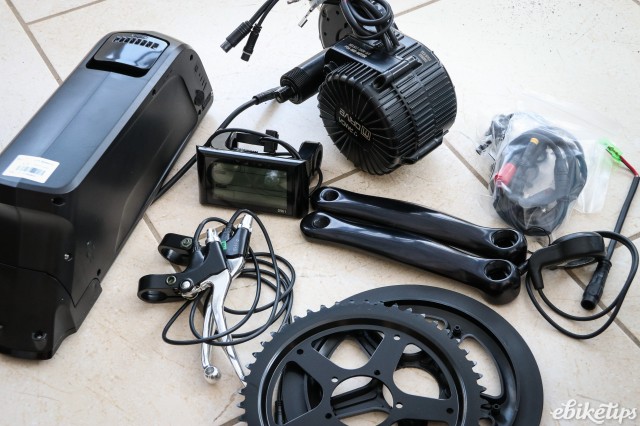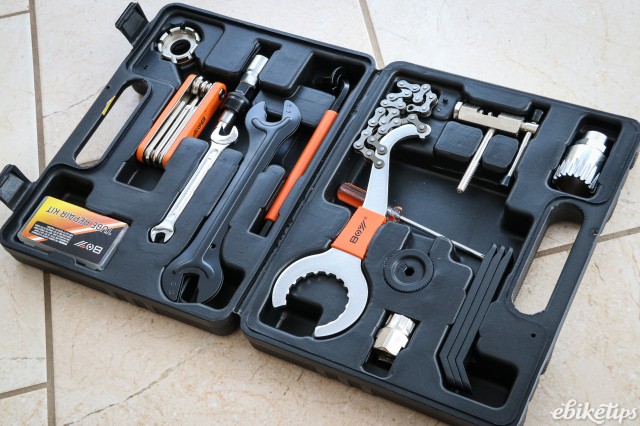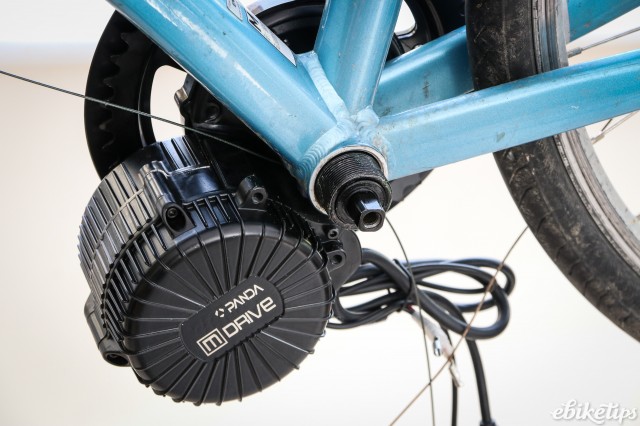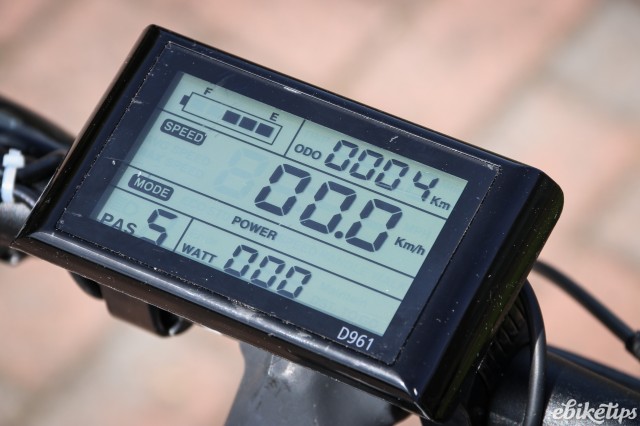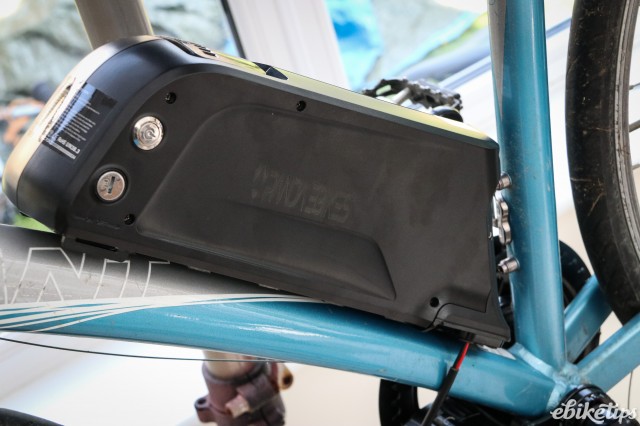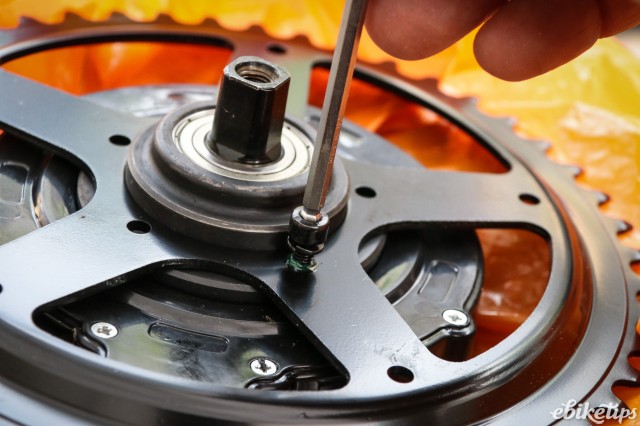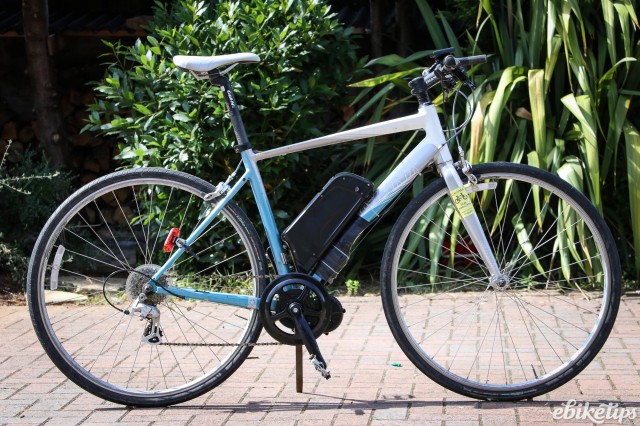Panda M-Drive conversion kit
ebiketips
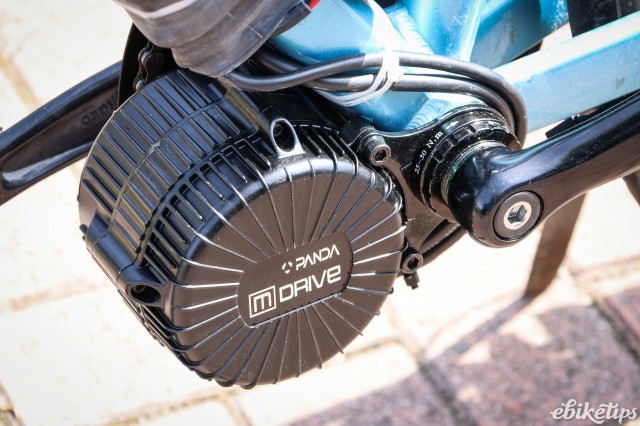
Panda’s M-Drive electric conversion kit is a simple and effective way to add power to a bike you already have. Including a battery you can be up and running for less than £600, and the ride experience is a marked improvement on the cheaper e-bikes that this system is competing with. If you’re looking for an e-bike under £1,000 and you don’t already have a bike you can use, you’ll get a better e-bike with this kit and a second-hand bike than you would with many of the off-the-shelf options.
Installation – easy if you have a bit of bike experience
I installed the M-Drive system on a Giant Dash hybrid bike. If you haven’t seen the installation feature then you can find it here. It’s titled, How easy is it to convert your bike to an e-bike?, and the answer is: reasonably easy. The basic installation simply requires you to remove the cranks and the bottom bracket, fit the motor and add the battery and controls. Provided you have the right tools, none of the jobs are too onerous. If you don’t have the right tools then Panda can supply a toolkit with all the requisite bits and pieces for a further £55. If you’re getting your local bike shop to do the work then there’s nothing you need that they won’t have at least two of.
It’s fair to note at this point that I didn’t fit everything in the system. Namely, I didn’t fit the cut-off brake levers. This was for two reasons. Firstly, I don’t really see the point of them: If I’m braking, I won’t be pedalling, and most mid-motor bikes don’t have them. Secondly, the donor bike had an integrated shifter and brake unit, which meant that If I wanted to use the supplied brakes I’d need to rummage around in the shed for another eight-speed shifter. The M-Drive system works fine without the cut-off levers, you are left with two open connections but you can cover them, or fill them with Sugru or something similar, to keep the water out.
Ride experience: pretty good although the power application takes a bit of getting used to
The M-Drive is a powerful motor, much more so than any hub motor you’re going to find in a comparably-priced bike off the shelf. That means that getting up the hills of Bath is a pretty trivial exercise for the most part. You can choose between three and five levels of assistance by changing the unit’s settings, and you can also play about a bit with how much power is on offer. I set it to the maximum, naturally.
The power application is smooth, and the motor is reasonably quiet: it doesn’t clunk or whine, and in terms of overall noise it’s probably a bit quieter than a Bosch or Shimano system. What’s not quite so good is the way the system reacts to your cadence: you get more assistance as your legs go round more slowly. While I can see the logic here – you’re slowing down and you need more assistance – it’s pretty counter-intuitive to have to change down the block when you get to the bottom of a hill. Bosch and Shimano systems work in the opposite way – spin faster, get more power – which feels a lot more natural, and they also don’t take cadence into account much at all on the highest power setting, which is also the right way to go about things. It’ll only (presumably) take a firmware tweak to get the M-Drive working in a similar way. The speed of your legs is also limited by the big chainring: more on that below.
The LCD display is good, with a clear readout of lots of data. I’m not sure the specific output wattage of the motor brings much to the party: that information would be better as a bar in the same way that Bosch and Shimano display it. The remote is easy to use, with nice tactile buttons.
Range – depends which battery you spec
One of the good things about buying a system such as this is that you can tailor it to your needs. If your commute is a couple of flat miles each way then the smallest battery (316Wh) will probably get you through the week just fine. If you’re intending to use the bike for longer leisure rides, or for touring, then battery capacities of up to 576Wh are available.
Our bike had a 468Wh battery, and in terms of range we found it similar to a 400Wh Bosch system. It could happily do four days of commuting on a single charge (my commute home is 4km including a 2km climb at 5%) and on the flat I never got any range anxiety: it was well over 50km with a mix of power modes and some hills thrown in.
Gearing – needs attention
One of my bugbears with this system is the chainring size. Like almost every other cheaper e-bike option I’ve tested, the Panda-equipped Giant (Giant Panda?) ends up being overgeared, thanks to the 48-tooth chainring. On the Giant that has replaced a 50/39/30 triple chainset, which with the 8-speed 11-28 cassette gave a very good spread of gears. The Panda’s big chainring gives you a range of gears that includes ones you’d never need – you can wind a 48/11 combination up to about 50km/h – but falls way short at the other end. It’s possible to increase the range by fitting a wider cassette but on this bike that would require a new derailleur too. And if your donor bike has a hub gear then you can’t adjust the ratios at all.
Realistically this system needs a single chainring of between 34 and 42 teeth, and the option to specify based on the bike you’re fitting it to. 48 teeth doesn’t work with every bike, and in fact I’d say it’s much more likely to not work than vice versa. On the steep hills of Bath you run out of gears, but you run out well before the really steep bits.
Overall: not perfect, but very good for the money
Assuming you already have a bike, you can get yourself assisted for as little as £600, and that’s with a motor that’s much, much better than a cheap hub unit. Even if you don’t have a bike and the technical skills to fit a system like this, you could probably source a second-hand or cheap new bike, and get a bike shop to fit it, for around £1,000. At that sort of cost it still stacks up very well against off-the-shelf bikes. The gearing is an issue in hillier areas, and the way the system applies power could do with some tweaks, but overall it’s a very good system for the money, and the fact that you can configure the battery choice to give you the range you need is an added bonus.
